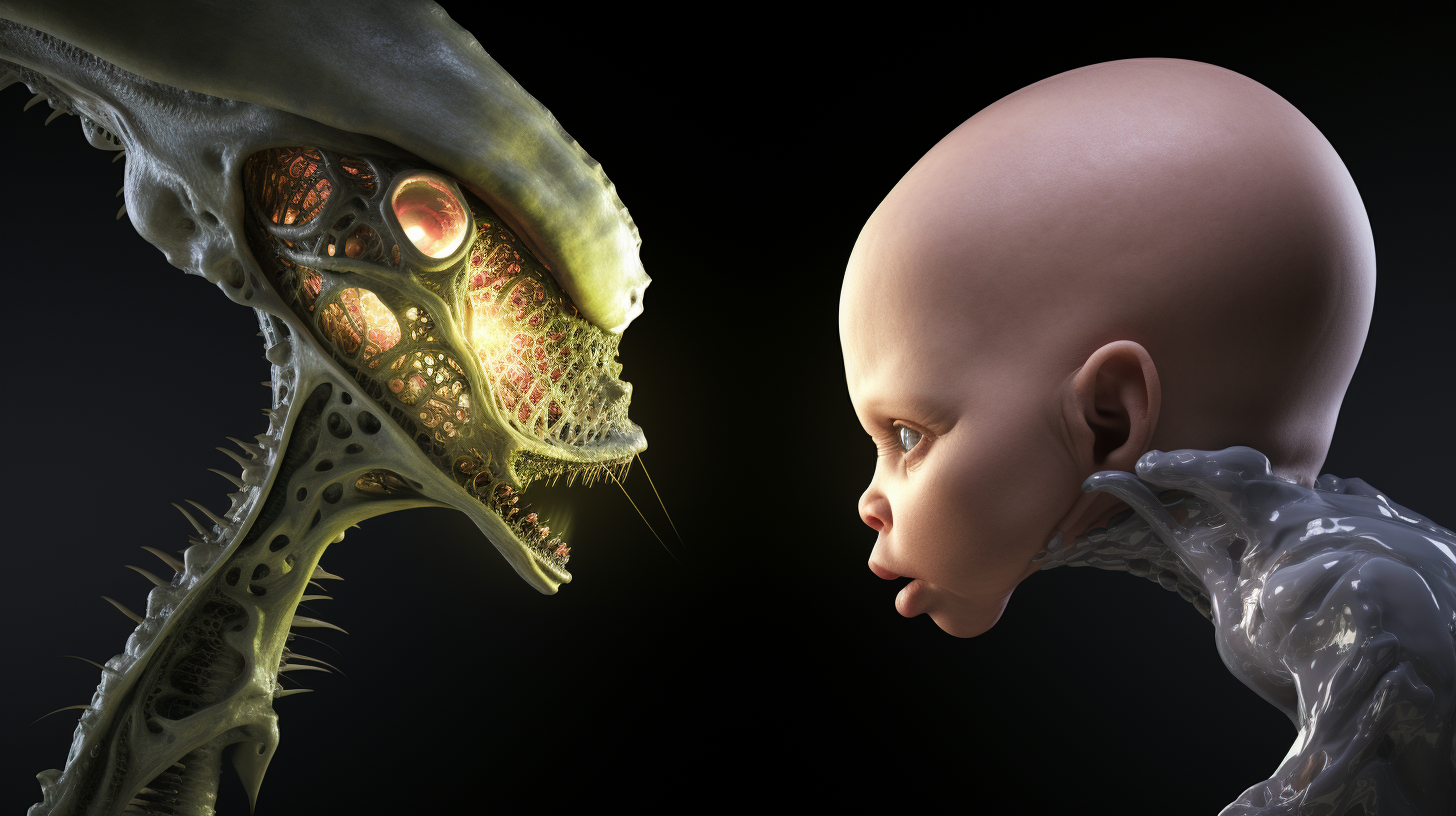Introduction
In the realm of genetics and human evolution, there exists a tapestry of anomalies and mysteries that continue to captivate our imagination. Beyond the standard narratives of evolution, scientists have stumbled upon peculiar genetic conditions that seem to harken back to a time long before Homo sapiens walked the Earth. A recent discovery in Houston, Texas, serves as a prime example, shedding light on the fascinating intricacies of our genetic heritage.
The Reptilian Heart
In 2010, doctors at the Texas Heart Institute examined a 59-year-old man who complained of chest pains. What they discovered was nothing short of astonishing. This individual possessed a three-chambered heart, a feature typically associated with reptiles, not humans. This rare condition was attributed to atavism, a phenomenon where ancestral traits reappear in modern organisms.
To understand this, we must delve into our evolutionary history. Our journey began in the sea as fish with two-chambered hearts. As we ventured onto land, our hearts evolved, mirroring those of reptiles, with three chambers.

Eventually, we acquired four-chambered hearts, becoming mammals and, ultimately, humans. During embryonic development, this sequence of evolution plays out once again. Any defect during this process could result in an individual retaining a heart more typical of our reptilian ancestors.
The Human Tail and Other Clues
While a human with a reptilian heart is a rarity, there are other genetic anomalies that hint at a connection to reptiles. Medical journals have documented over 100 cases of human tails since the 1800s. Conditions such as ichthyosis, characterized by dry, scaly skin, and syndactyly or ectrodactyly, where fingers fuse into claw-like appendages, further raise questions about our ancient lineage.
Some scientists suggest that these anatomical irregularities might not merely be remnants of a reptilian stage in human development. Instead, they propose a more intriguing possibility: that humans once intermingled with reptilian aliens. This notion finds resonance among ancient astronaut theorists, who assert that the stories of beings like China’s first emperor, Fuxi, offer clues to this enigmatic past.
Ancient Myths and Extraterrestrial Connections
Fuxi, a mythical ruler of China, is said to be the original human prototype. He and his sister, Nuwa, possessed humanoid upper bodies but snake-like lower bodies. Similar tales of reptilian humanoid beings can be found in the mythologies of Japan, Greece, and South America. The presence of detailed drawings and reliefs depicting these fantastic creatures raises intriguing questions.
Could these creatures be more than myths? Could they be ancient aliens whose appearance was accurately recorded in ancient texts and artworks? David Childress and other researchers suggest that in some cases, this might indeed be the case.
Divine Beings and Genetic Anomalies
Further adding to the mystery are unusual genetic anomalies that seem to mirror descriptions of divine beings from ancient texts. Millions of infants are born with blue patches of skin known as Mongolian spots, reminiscent of the blue-skinned gods in India and Egypt. Additionally, the history of gigantism throughout the ages brings to mind biblical tales of the Nephilim, the giant offspring of humans and divine beings referred to as “the watchers.”
Video:
Our Genetic Enigma
In the complex interplay of genetics, mythology, and ancient history, the tantalizing question arises: do we carry the genetic legacy of extraterrestrial beings within us? Could our DNA contain remnants of a lost extraterrestrial gene, markers resurfacing at the right time in certain individuals?
As we peer into the depths of our genetic code, we are confronted with mysteries that challenge our understanding of evolution and human origins. While we may never fully unravel these enigmas, the connection between human genetics and ancient mythology remains a source of fascination and intrigue, reminding us that our history may be far more complex than we ever imagined.

18 thoughts on “The Intriguing Connection Between Human Genetics and Ancient Mythology”
Comments are closed.